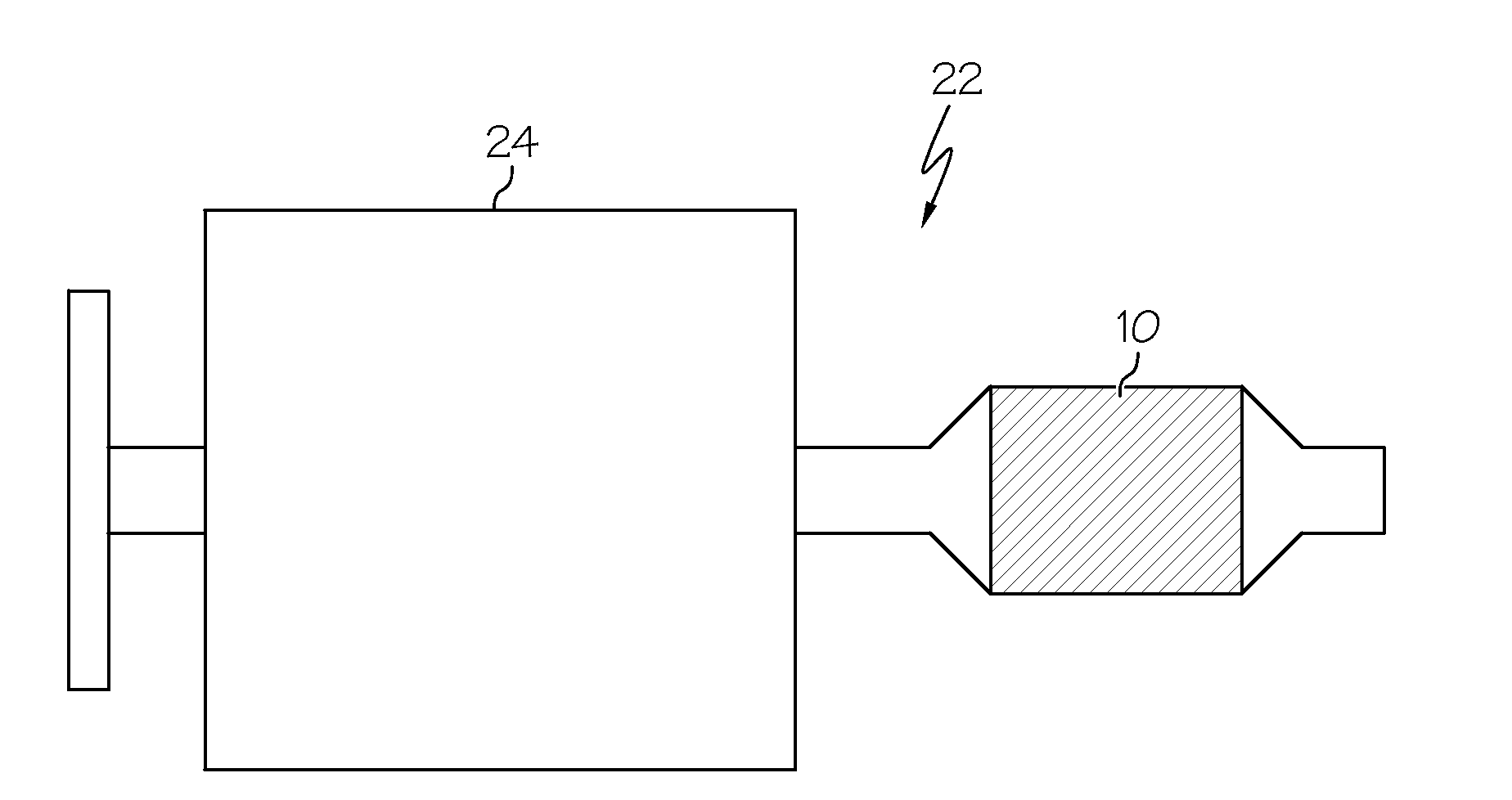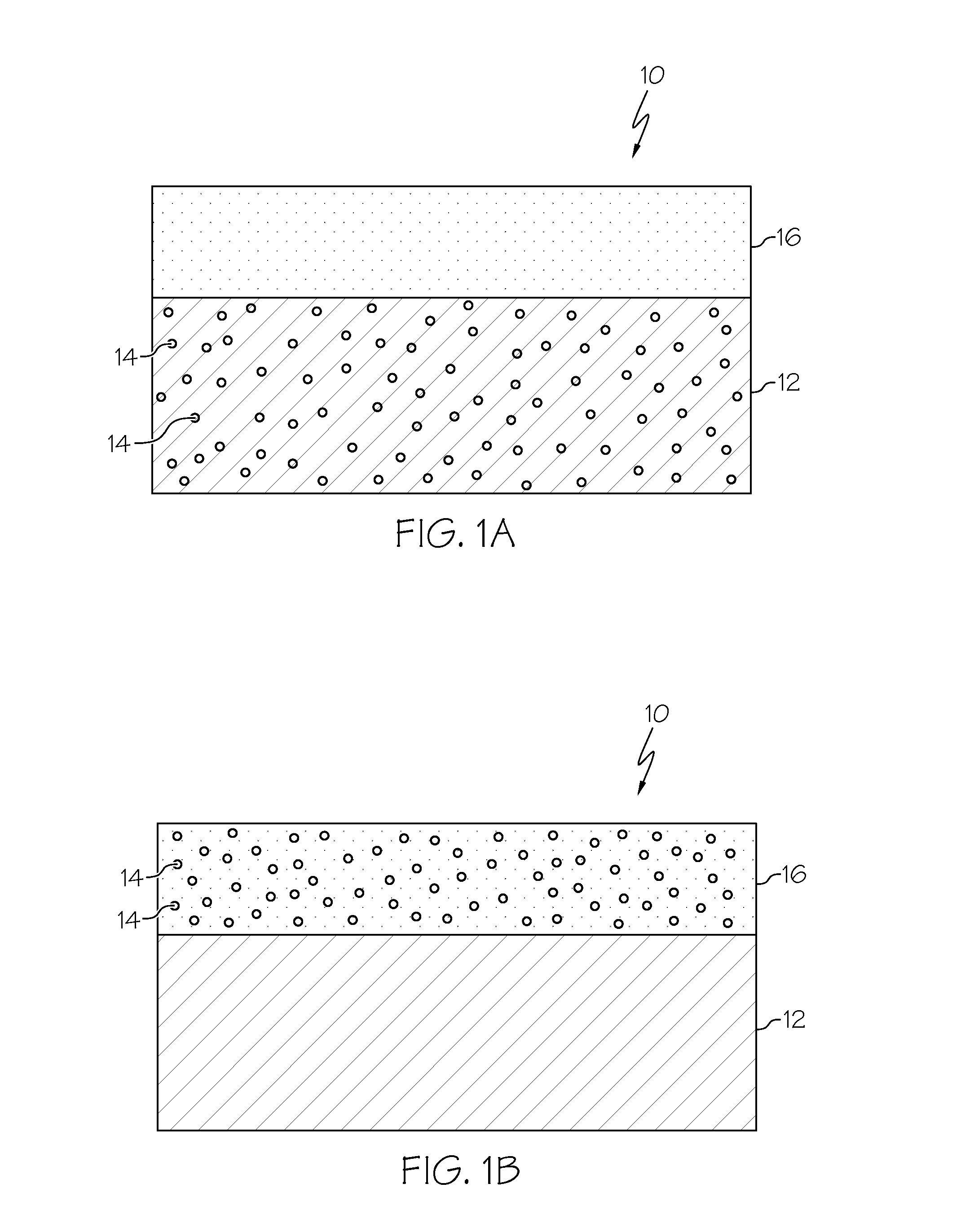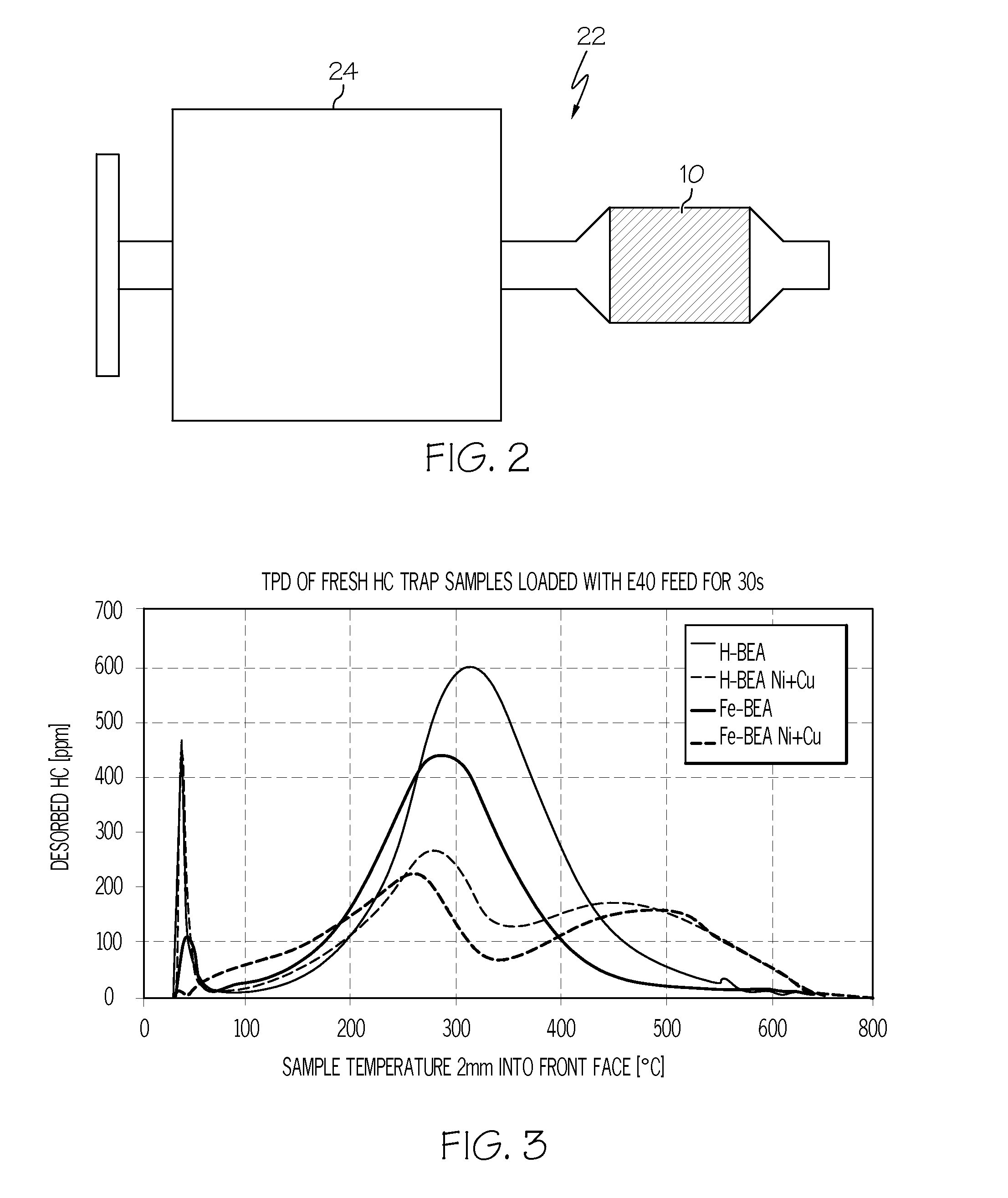Combined hydrocarbon trap and catalyst
- Summary
- Abstract
- Description
- Claims
- Application Information
AI Technical Summary
Benefits of technology
Problems solved by technology
Method used
Image
Examples
example 1
[0038]Two hydrocarbon traps were prepared in accordance with an embodiment of the invention. The first trap comprised an extruded zeolite monolith formed by extruding 80% by weight H-Beta-40 (H-BEA) zeolite through an extruder at a cell density of 400 cpsi and a wall thickness of 14 mil. The resulting zeolite content was 5.4 g / in3. A second trap comprised an extruded zeolite monolith formed by extruding 65% by weight Fe-ion exchanged zeolite through an extruder at a cell density of 400 cpsi and a wall thickness of 11 mil. The resulting zeolite content was 3.9 g / in.3 Both traps were impregnated with 7 wt % of a Cu—Ni mixture.
[0039]For purposes of comparison, two extruded zeolite-traps identical to the traps above were prepared without the Cu—Ni mixture. FIG. 3 illustrates the desorption temperature achieved with the traps containing a Cu—Ni catalyst in comparison with the traps which contained no Cu—Ni. The samples were evaluated in an inert feed gas containing 10% H2O and the balanc...
example 2
[0046]Two of the H-beta-40 (H-BEA) zeolite traps of Example 1 (with and without Cu—Ni) were subjected to simulated biofuel-mix gasoline (40% ethanol / 60% gasoline) emissions comprising a blend of inlet gases including acetaldehyde, ethanol, propylene, isopentane, and toluene. An inert feed (10% water in nitrogen) was used during temperature programmed desorption. Tables 1 and 2 illustrate the amounts of adsorbed and desorbed hydrocarbons for the two traps.
TABLE 1H-Beta-40 Zeolite (400 / 14) without Cu—Ni catalystAdsorbedHCHCTemp - 50%Temp - 80%InletAdsorbedDesorbedDesorbedDesorbedGas(%)(%)(° C.)(° C.)AcetaldehydeC2H4O93.6 + / − 0.449.1 + / − 24.8193 + / − 34272 + / − 2 EthanolC2H5OH94.3 + / − 0.24.8 + / − 4.5327 + / − 56389 + / − 9 PropyleneC3H692.5 + / − 0.438.3 + / − 2.4 276 + / − 16400 + / − 28IsoPentaneC5H1294.1 + / − 0.1171.9 + / − 4.6 299 + / − 0 348 + / − 9 TolueneC7H894.5 + / − 0.4103.2 + / − 4.2 363 + / − 12406 + / − 7 Weighted SummaryAdsorbed HC (%) =93.6 + / − 0.1Adsorbed HC leaving unconverted (%) =80.6 + / − 0.1 306...
example 3
[0050]Four hydrocarbon traps were prepared in accordance with an embodiment of the invention. The first trap comprised an extruded zeolite monolith formed by extruding 80% by weight H-Beta-40 zeolite through an extruder at a cell density of 400 cpsi and a wall thickness of 14 mil. The second trap comprised the same H-beta-40 zeolite impregnated with 7 wt % of a Cu—Ni mixture (50 / 50 ratio). The third trap comprised an extruded zeolite monolith formed by extruding 80% by weight H-Beta-100 zeolite through an extruder at a cell density of 400 cpsi and a wall thickness of 14 mil. A fourth trap was formed comprising the same H-beta-100 zeolite, but was impregnated with 7 wt % of a Cu—Ni mixture (50 / 50 ratio). The traps were tested for stored hydrocarbon release. The results are shown in FIG. 5. As can be seen, higher stored HC desorption temperatures are obtained with H-beta-40 and H-beta-100 zeolite traps which contain a Cu—Ni catalyst. The trap comprising H-beta-40 zeolite exhibited the...
PUM
| Property | Measurement | Unit |
|---|---|---|
| Linear density | aaaaa | aaaaa |
| Linear density | aaaaa | aaaaa |
| Percent by mass | aaaaa | aaaaa |
Abstract
Description
Claims
Application Information
 Login to View More
Login to View More - R&D
- Intellectual Property
- Life Sciences
- Materials
- Tech Scout
- Unparalleled Data Quality
- Higher Quality Content
- 60% Fewer Hallucinations
Browse by: Latest US Patents, China's latest patents, Technical Efficacy Thesaurus, Application Domain, Technology Topic, Popular Technical Reports.
© 2025 PatSnap. All rights reserved.Legal|Privacy policy|Modern Slavery Act Transparency Statement|Sitemap|About US| Contact US: help@patsnap.com



